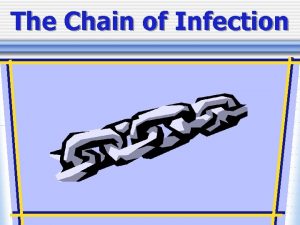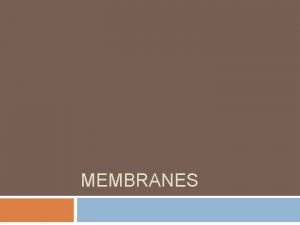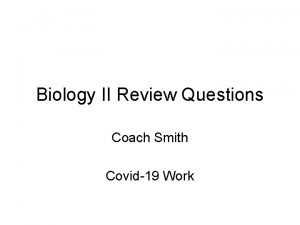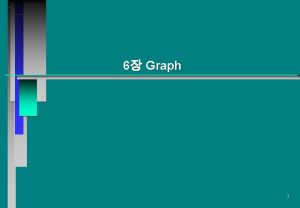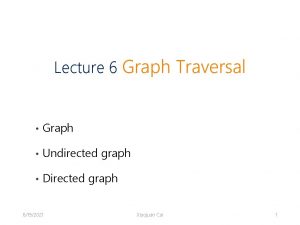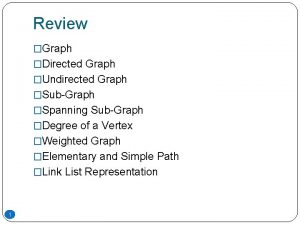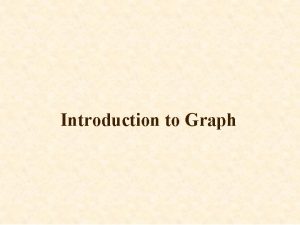GRAPHING Using DR TAILS What is a graph















- Slides: 15

GRAPHING Using DR TAILS

What is a graph? ■ A graph communicates in picture form the data collected in an experiment.

Why do you need to learn about graphing? ■ You will be graphing the data you collect from experiments. ■ To interpret your data ■ Need to communicate your results with the class.

DR TAILS ■ Data ■ All data should be plotted accurately. – With large sets of data, count the number of points and make sure you have the correct total. – Be sure not to mix up x and y axes. – Use small points that will make it easy to see where the point has been placed.

Bar vs. Line graphs …. which should I use?

DR TAILS ■ Ruler ■ A ruler should be used to make straight axes ■ Graph should include line of best fit ■ *Constructing graphs in excel is encouraged.

■ Line of best fit, must go through (0, 0). ■ Half the points above, half the points below the line.

DR TAILS ■ Title: Your title should follow this: The effect of Manipulated Variable vs. Responding Variable. ■ Ex. The effect of wing length vs Time of descent.

DR T AILS ■ Axis ■ Remember DRY MIX ■ The Dependent (or Responding variable) goes on the Y axis ■ The Manipulated (or Independent variable) goes on the X axis.

DR TAILS ■ Increments ■ Choose a scale that will fit all of your data on the page ■ Start from the origin, with equal numbering and spacing from there. – Make sure that you choose increments that will have you using as much of your graph. ■ Questions to ask yourself: – How many squares do you have to work with? – How much data do you have to graph?

■ Bad examples – make sure your origin is at zero, and mark at equal increments (unlike the bottom graph)

A good choice of increments With the boxes available, 12 seconds fit into this space well by choosing 10 boxes = 2 seconds. Try different scales, trying to fill up the space you have while still having nice even increments For plotting.

L DR TAI S ■ Labels – on each axis, you need labels with units. ■ Examples: mass (grams), Volume (m. L), length (m) ■ The variable (mass, volume, length) is the label. The way you measure it (grams, m. L, ) is the units.

DR TAIL S ■ Size: – Your graph must take up at least half of the available space. – For a graph on a full page of paper, that means it should be over a half of page. – You will not earn this point if you choose increments that squish your data into a very small part of your graph.

Statement ■ Statement: You must include a statement that includes WHAT YOU SEE (shape or slope of the graph), and WHAT IT MEANS (here you need to talk about the variables on the graph). ■ Example: This graph is a straight line, so the slope does not change. Because the slope is constant, the speed (position over time) is constant. ■ This will be the most challenging part of the score, and will be something we should discuss for each graph.
 Put apostrophe: mices tails are shorter than rats tails.
Put apostrophe: mices tails are shorter than rats tails. Tails graph
Tails graph Tails acronym graphs
Tails acronym graphs Greek or latin root/affix calc-stone words
Greek or latin root/affix calc-stone words Graphing lines using slope intercept form
Graphing lines using slope intercept form Graphing using intercepts
Graphing using intercepts J.c.f.gauss
J.c.f.gauss Do you like fairies
Do you like fairies The movement in and out of cells
The movement in and out of cells Thread like projections that are similar to tails
Thread like projections that are similar to tails Do raindeers have tails
Do raindeers have tails Tails acronym graphs
Tails acronym graphs Nonpolar tails
Nonpolar tails Animals with prehensile tails
Animals with prehensile tails Causes of macrocytic anemia
Causes of macrocytic anemia Sperm count post vasectomy hpf
Sperm count post vasectomy hpf









